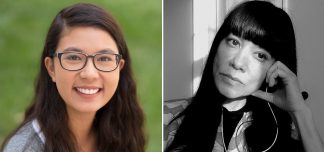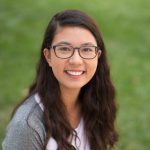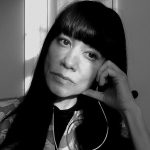By Allison Campbell-Jensen
The wealth of information in the Immigration History Research Center Archives (IHRCA) attracts researchers with different goals, studying different populations, and perhaps even holding different conceptions of words like refugee.
Just ask Curator Ellen Engseth.
“One of the many things I’ve learned through working with the Immigration History Research Center Archives, which includes a great amount of material on refugees, is the complexity of the term,” she says. “The word means different things in various places, times, and cultures, and all these are complicated by personal meaning or preference. Some may choose to identify with the word, some may not though technically assigned the label or status, or some may have used another related term such as asylee, immigrant, émigré, displaced person.”
Adds Engseth: “I encourage listening to the refugee perspective and voice for an understanding of both the word and the experience. For me as a reader of archives, it is these sources that offer the most clarity and understanding on refugee history.”
In other words, the IHRCA supports research across a broad spectrum. Take Kimberly Beaudreau, Rini Yun Keagy, and Ramona Holmes as examples. These three IHRCA users recently leveraged the archives for three very different projects.
- Beaudreau, a doctoral student in History at the University of Illinois – Chicago, is examining how the federal government has used different terms about people on the move to affect policy.
- Artist Yun Keagy examined archival resources related to people impacted by the Guatemalan civil war and made art with it.
- Ethnomusicologist Holmes delved into Displaced Persons records for her book, “Resilient Voices: Estonian choirs and song festivals in World War II Displaced Persons Camps.”
Focusing on refugee and asylum law and policy
In looking at U.S. immigration history from about 1975 to 2000, Beaudreau seeks to illuminate how the federal government has defined “economic migrants as undeserving of entry as opposed to very deserving refugees.” Her preliminary research suggested that mostly nonwhite, impoverished populations were labeled “economic migrants.”
She looked at border-crossing populations broadly, from people seeking to come to the United States from Southeast Asia (called “Indo-Chinese” in the 1970s), to Central Americans aiming to cross the border with Mexico, and to those from Cuba, Haiti, and other Caribbean countries requesting entry at Miami.
In the IHRCA, she found Congressional testimonies, hand-written notes, and other relevant papers about how potential refugees were screened before they could come to the United States. During a recent three-day visit to the IHRCA, she took more than 7,000 photographs of documents.
Her research also is carrying her to presidential archives and other repositories. Still, the Libraries’ resources help reinforce Beaudreau’s argument: “Labeling border crossers as economic migrants became a catch-all that allowed the federal government to deny refugee and asylum status to increasing numbers of individuals during the late 20th century.”
Time and again
Named an artist-in-residence at the Libraries in 2018, Yun Keagy chose as part of her explorations to look in the IHRCA for material related to the civil war in Guatemala. As a child, she lived in Guatemala during the war, unable to understand the scope of its ramifications. It was the residency in the IHRCA that provided her a first opportunity to examine source materials from that period of her life.
In the archive, Keagy read reports written by human rights organization staff on the ground in Guatemala, as well as journalistic dispatches about the ever-changing political circumstances concerning human rights issues and abuses. Some were handwritten; others, typed and edited by hand.
“What was missing was first-hand reporting from the refugees themselves — that is something I would have loved to see,” she says. “I was able to see some of their names, their age, somebody else paraphrasing their story for them.”
With limited materials, it was impossible to trace what ultimately happened to the refugees: Some may have been deported. Some may be thriving in the United States. Others became statistics, listed in tallies of the bodies found.
Along with feeling sympathetic for their families, reading the documents gave her a visceral awareness of her uncle who had been killed, execution style.
Despite the gruesomeness of the reports, as a moving image artist, Keagy was fascinated by the tactility of the contemporaneous documentation, “even as you are looking at it retrospectively.” She photographed many of the materials, including the folders that they were housed in, to highlight their life as archival symbols.
She incorporated some of those images in the recent video project for her U of M Master’s of Fine Arts degree. Called El Cenote, it examines cyclical time, as perceived by the original Mayan inhabitants and many current indigenous peoples of Guatemala. Lidar, a modern laser technology that can detect formations beneath the earth’s cover, has revealed thousands of previously unknown Mayan structures since 2017 and 2018. These are overlaid by, and in her video juxtaposed with, Spanish colonial history, “an indigenous genocide and the erasure of culture, and the Guatemalan civil war period, when there was a second genocide.”
The archive’s contribution to her project is beautiful and expansive, she says.
“It’s not about looking into one frozen moment in time; it’s thinking about the implications of that moment, how that moment re-emerges in our own time, and how we might imagine the future.”
Following the records
“One way in which Estonians dealt with the chaos and trauma of WWII and its aftermath was through choral singing.”
—Ramona Holmes
“One way in which Estonians dealt with the chaos and trauma of WWII and its aftermath was through choral singing,” according to the description of Holmes’ book on Amazon.
Holmes, emerita faculty in Ethnomusicology and Music Education at Seattle Pacific University, first sought history about Estonians held in Displaced Persons camps at an Estonian archive in New Jersey where archives had been stored. When she found out the archives had been donated to the IHRCA at the U of M, she planned a visit here.
Holmes was in contact with the curator to prepare materials prior to her five-day visit, so it was productive and efficient. Once she arrived, she located identification cards for those at the Displaced Persons camps. Among others, she was able to look up composers and a photographer whose pictures she planned to use. She read reports about Estonian communities in the camps.
She found things she didn’t expect: original letters to the American military who controlled the occupation zone where the camps were located. Holmes located lists of choir members at song festivals. She also found original programs from the 1947 Augsburg Song Festival that is the center of the book, along with a carefully preserved scrapbook of the Augsburg festival.
Thus her work in the IHRCA contributed to her “Resilient Voices” on music and politics, identity, and healing for Estonians who ended up dispersed to Australia, Canada, Europe, and the United States. Beaudreau and Keagy continue their explorations. Yet even in this small sample, the IHRCA supported research ranging from politics to art, from refugees to displaced persons.







